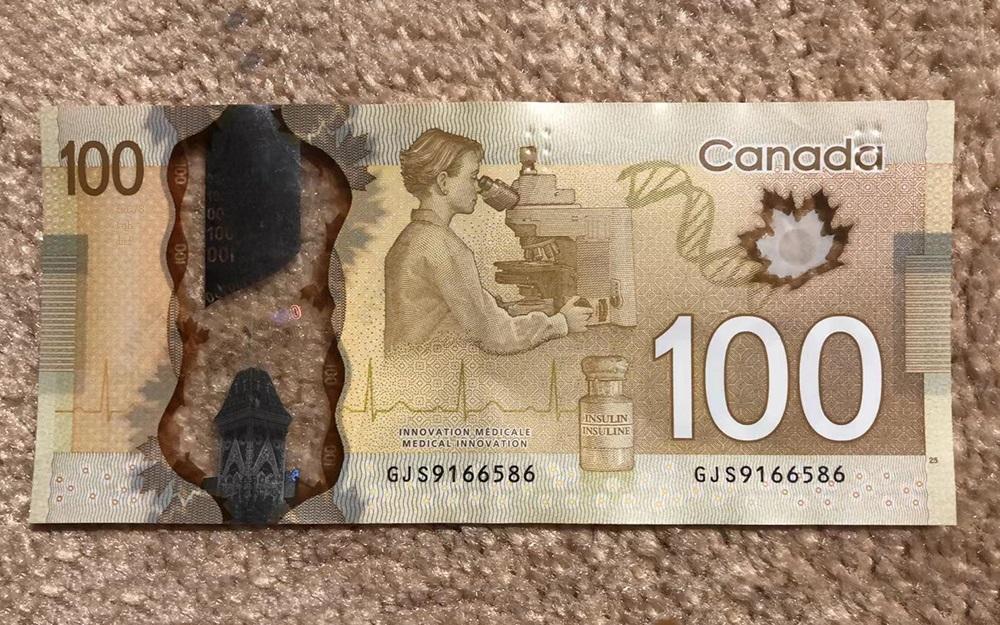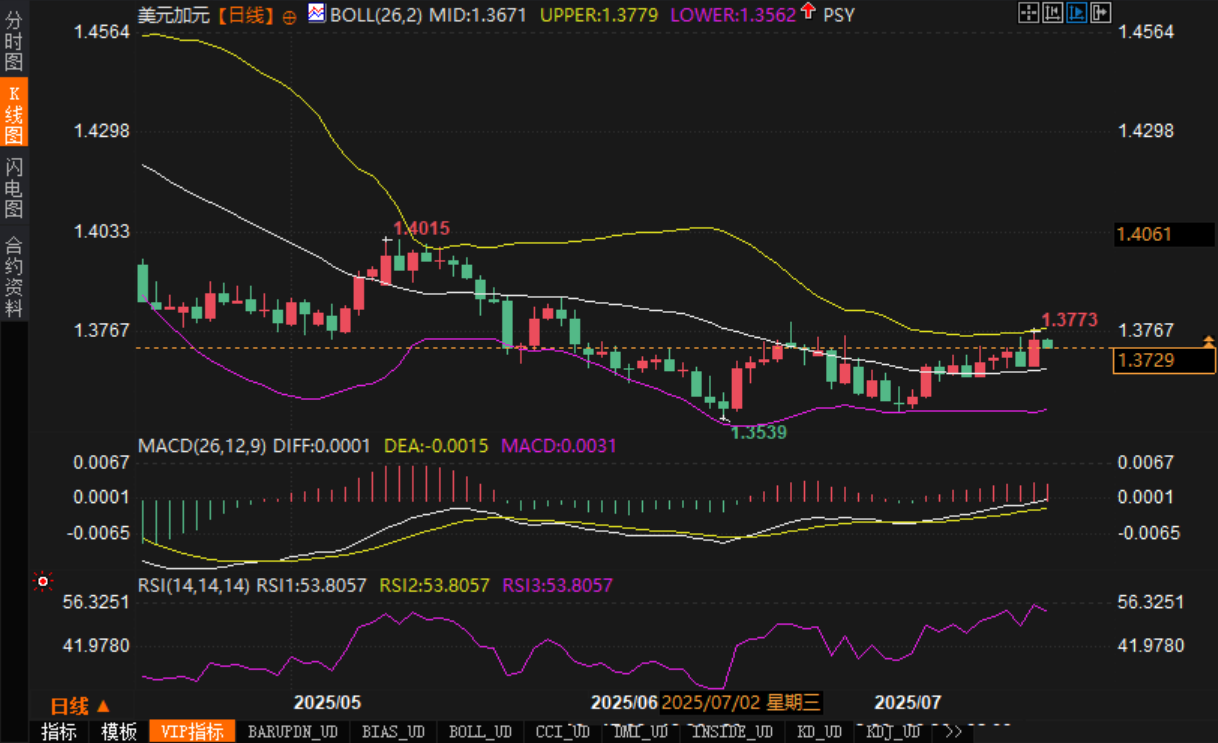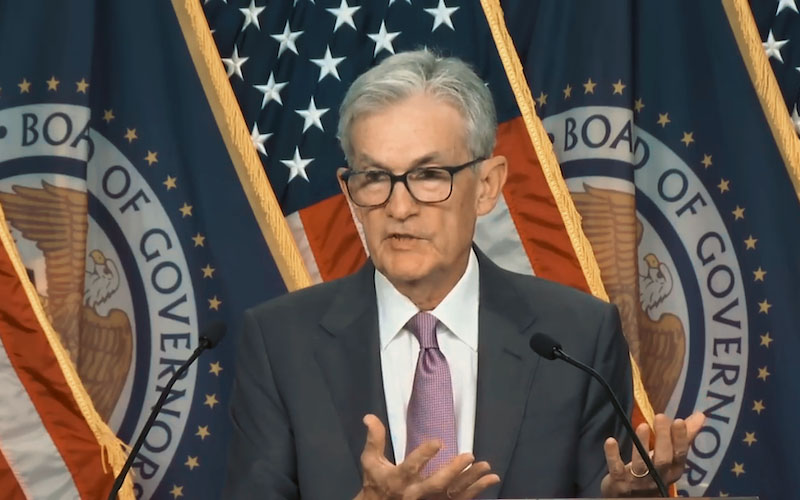The US dollar's two-week rally ends, is the pace of USD/CAD bulls slowing down?
2025-07-18 18:45:34

Fundamentally, the market is paying attention to the dynamics of US-EU trade negotiations. European Trade Commissioner Maros Sefcovic arrived in Washington on Wednesday to start a new round of negotiations. Earlier, US President Trump imposed a 30% tariff on imports from the EU last weekend, which suddenly tensed the trade situation. In addition, the United States also imposed a 30% tariff on some Canadian imports last weekend.
From the perspective of the federal funds rate expectations, the market's expectation of the probability of the Fed cutting interest rates in September has dropped from 70.4% a week ago to 58% at present. The US CPI data for June showed that the prices of imported goods rose, which suppressed the market's expectations for a quick turnaround by the Fed. Despite this, overall, the US dollar still has fundamental support, but short-term profit-taking has caused the US dollar index to fluctuate and pull back.
Technical aspects:
From the daily chart, USD/CAD is in a volatile rebound phase and is now close to the suppression area of the upper Bollinger Band. The Bollinger Band indicator shows:
Bollinger Band Middle Track (MID): 1.3671
Bollinger Band Upper Track (UPPER): 1.3779
Bollinger Band Lower Track (LOWER): 1.3562

The exchange rate has gradually rebounded from the low of 1.3539, and the recent price has reached 1.3773, approaching the key resistance of 1.3779 on the upper track. There is an obvious "Bollinger Band Convergence" feature in the short term, and the market volatility has narrowed, suggesting that the window for a change is approaching.
In terms of MACD indicators, the MACD histogram continues to increase in volume, but the momentum gradually weakens. The DIFF line is slightly higher than the DEA line, and the golden cross state continues, but the two lines are close, and there is a risk of a pullback.
The RSI indicator shows that the RSI is oscillating around 53.80 and has not entered the overbought zone, indicating that the current bullish force is not extreme, but the upward pressure is obvious.
Market sentiment observation:
Market sentiment is currently in a stage of long-short tug-of-war. The overall logic of the dollar's strength remains, but in the short term, the uncertainty of trade negotiations and the increase in tariffs have caused the market's risk aversion to rise, causing some funds to flow to non-US assets.
The Canadian dollar is affected by the commodity currency attribute and faces the dual pressure of oil price fluctuations and trade barriers. In addition, the market's expectations for the Fed's September rate cut have cooled, resulting in a short-term technical rebound in the exchange rate. However, the rebound momentum is limited, the market sentiment is cautious, and traders mostly treat it as a volatile market.
From the perspective of trading sentiment, short-term funds tend to take profits and tend to reduce positions near key resistance levels and wait and see, waiting for clearer directional signals.
Outlook for the future:
Short-term outlook:
In the short term, USD/CAD is close to the upper Bollinger Band of 1.3779. If it fails to break through this area effectively, there is a risk of technical retracement. MACD momentum is weakening, and RSI indicator is fluctuating at a high level. Beware of false breakthroughs and short-term pullbacks.
If the exchange rate falls back, pay attention to the support of the middle track of the Bollinger Band at 1.3671. Once it falls below, it will open up space for a retracement to 1.3562 (the lower track of the Bollinger Band).
Mid- to long-term outlook:
In the medium and long term, USD/CAD is still in a volatile bullish structure, but attention should be paid to the progress of trade negotiations and changes in the Fed's policy expectations. If the US dollar index remains strong and the market's expectations for the Fed's rate cuts further decrease, USD/CAD is expected to challenge the high of 1.4061;
However, if trade frictions escalate further, it may trigger a rise in risk aversion in the market, which in turn will suppress the rise of the US dollar. The exchange rate will return to the consolidation range and enter a state of long-short balance.
- Risk Warning and Disclaimer
- The market involves risk, and trading may not be suitable for all investors. This article is for reference only and does not constitute personal investment advice, nor does it take into account certain users’ specific investment objectives, financial situation, or other needs. Any investment decisions made based on this information are at your own risk.










